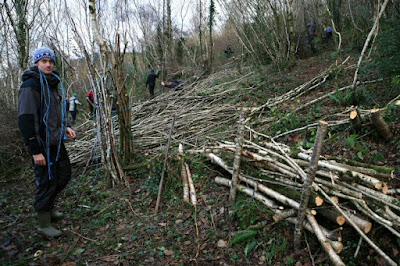
Looking south across Co. Waterford, the coast, and out to the Celtic Sea



Michael and his daughter Shan invited us to climb the peaks. He was last up here when he was 17.





A close-up look at the Golden Vale, a series of valleys beneath several peaks, and some of the most fertile land in the country. The Vale is centered in Co. Tipperary and spills down into Co. Limerick.
At a pass in the Knockmealdowns known as "the Gap" stands this shrine to Mary. Ireland, which is half the size of Washington State, has hundreds of these shrines, usually beside well-travelled roads. Most were built in or just after 1954, the year the Vatican named a Marion Year, or year to celebrate Mary. Parents named their newborn daughters Mary and Ireland issued a stamp. Many of the shrines are built near holy wells, and one located about four miles from Kinsale made the news in 1985 when observers noticed a slight movement. Similar movements were seen at shrines across the country: usually at dusk, after the spot lights are lit.

When Michael was last here, none of this was. This is one species of rhodendron, common rhododendron (rhododendron ponticum). The mountainside up to the right is covered in it. I can't think of an infestation this large that I've ever seen. Today, it is "native" in SE Europe (SE Bulgaria through Turkey into the Caucasus) and the Iberian Peninsula. But it grew here in the Tertiary period and then much more recently in one of the most recent inter-glacial periods, both times receeding due to changes in climate. It was (re)introduced to Ireland in the 1700's and has since then exploded. It is shade tolerant but thrives in full sun as well. A prolific seed producer, it will just as likely spread vegetatively. Unfortunately for native oaks, it hosts the fungal pathogen that causes 'sudden oak death.' Ponticum has invaded has invaded three habitats of international importance under the EC Habitats Directive: upland oak woods, bogs and heath.















































